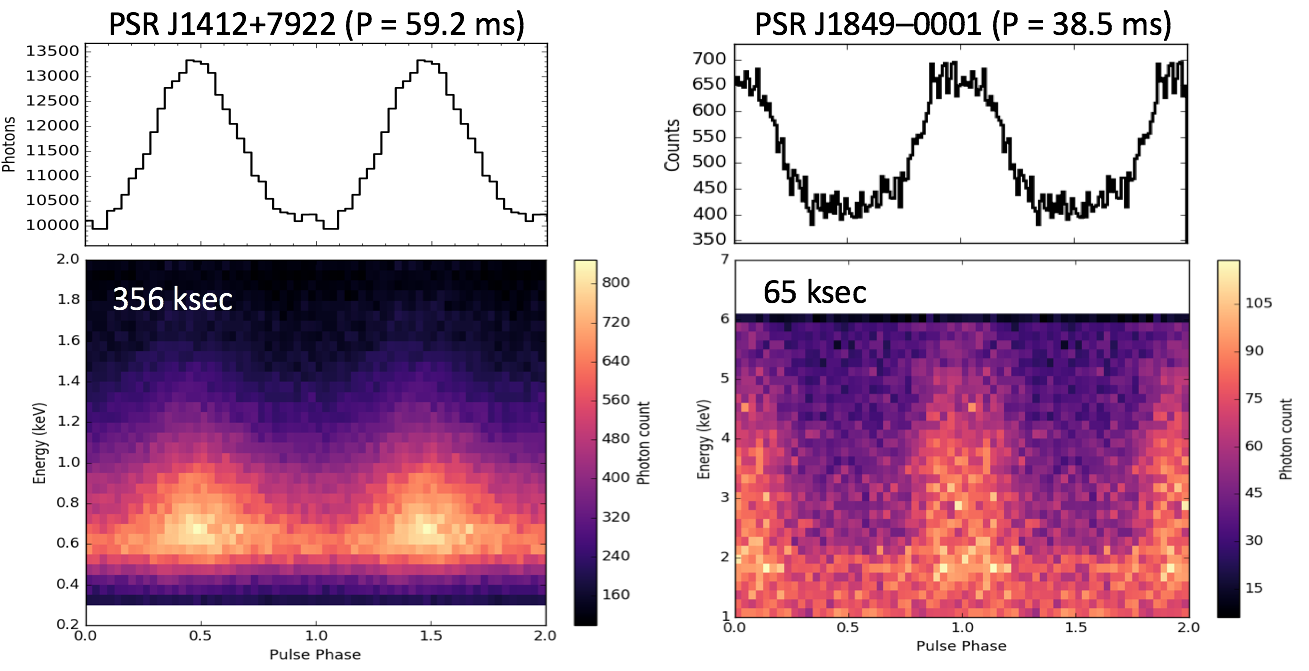NICER / ISS Science Nugget for September 13, 2018NICER improves understanding of pulsars seen only in X-raysNearby neutron stars that are observable as pulsars – i.e., which sweep emission beams across the Earth as the stars spin – are usually seen across the electromagnetic spectrum, from radio waves (with telescopes on the ground) to high-energy gamma rays (with NASA's Fermi telescope). A handful of objects, however, are only bright and easily visible in the X-ray band. Analysis of NICER data for two such pulsars, J1412+7922 and J1849-0001 (see figure, next slide), has recently produced much-improved understanding of the rotation properties of these stars. With 11 months of data for J1412 and 6 months of data for J1849, the long-term slowdown of the pulsar spin in each case has been measured with > 100x (two orders of magnitude) improved precision.
This refined knowledge is important for two purposes. It enables deeper searches for pulsations at other wavelengths (especially gamma-rays), allowing us to probe and better understand the wideband emission mechanisms for high-energy pulsars. It also enables unprecedented searches for gravitational waves (GWs) from nearby neutron stars. This is a pioneering capability provided by the ground-based Laser Interferometer Gravitational-Wave Observatory (LIGO), which in the last two years has made celebrated, first-ever detections of gravitational waves from transient sources. Neutron stars can be sources of continuous GWs at twice the pulsar spin frequency, and stars with significant asphericity and faster spin are stronger GW emitters. Existing upper limits on GW emission already provide interesting constraints on the deformation of the stars; the improved NICER-derived knowledge on long-term spin behavior will significantly tighten these constraints and provide new information about the physical makeup of neutron stars. NICER
|



